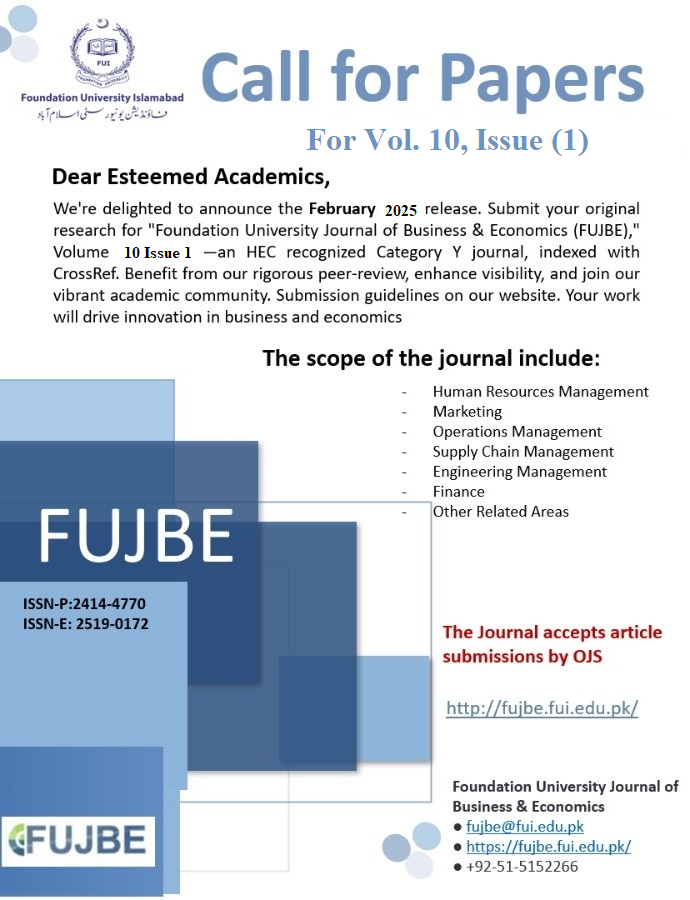Corporate Debt, Accrual, and Real Earnings Management: A Non-Linear Relation Across Asian Emerging Economies (AEE)
DOI:
https://doi.org/10.33897/fujbe.v9i2.919Keywords:
Corporate debt; AEM and REM; Non-linear relation. JEL Classifications : C23; G11; G32.Abstract
This study provides empirical evidence on non-linear relation between Corporate Debt and Earnings
Management (EM) across nine Asian Emerging Economies (AEE). Two widely used and accepted EM
techniques are employed i.e. accrual-based earnings management (AEM) and real activities-based earnings
management (REM). In order to investigate debt-EM nexus in AEE institutional settings, data of 6,128
non-financial listed firms with 60,880 firm-year observations are used from the period of 2000 to 2021. Our
results, based on fixed-effects and system-GMM models, report that firms use REM in low-debt zones and AEM
at higher levels of debt. The non-linear debt-AEM nexus has a U-shaped pattern whereas debt–REM reveals an
inverted U-shaped relation. In sum, results show that managers exercise REM in low debt regimes and prefer to
increase AEM activities at high debt level in order to avoid debt covenant violation. REM is although difficult
to detect by market participants but it is still considered costly for high-debt firms since these firms have high
interest and principal obligations that absorb free cash flows and leave nothing for managers for their
substandard spending. The findings of the study have significant implications for investors, managers,
policymakers and practitioners.



